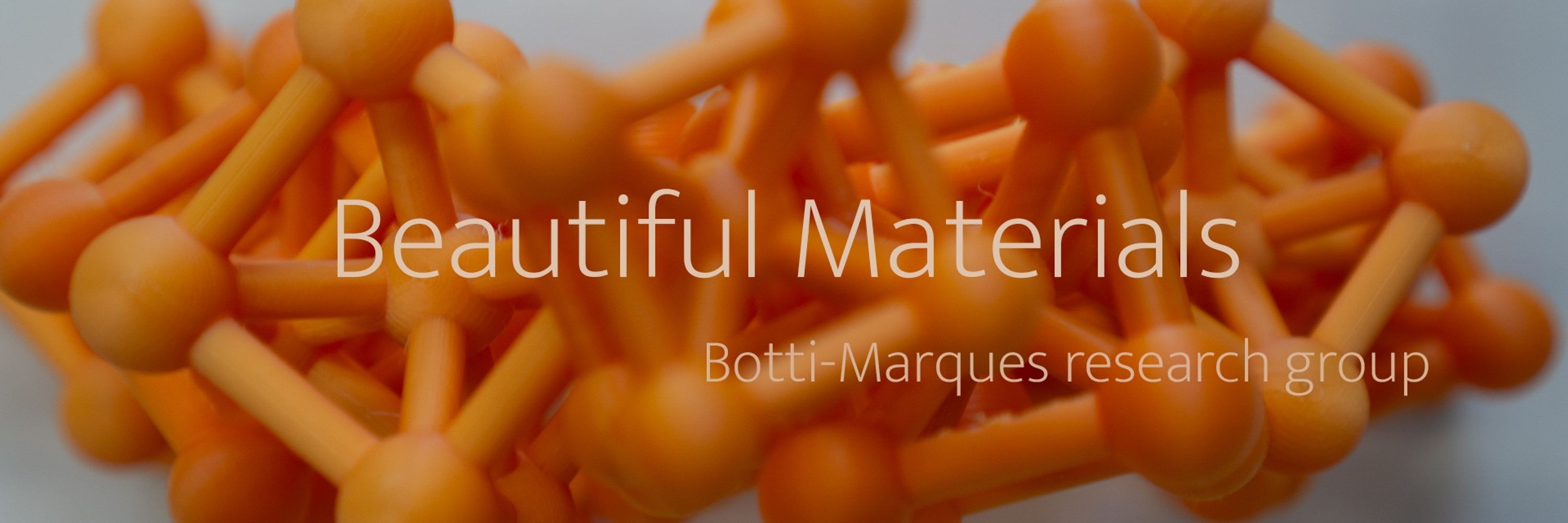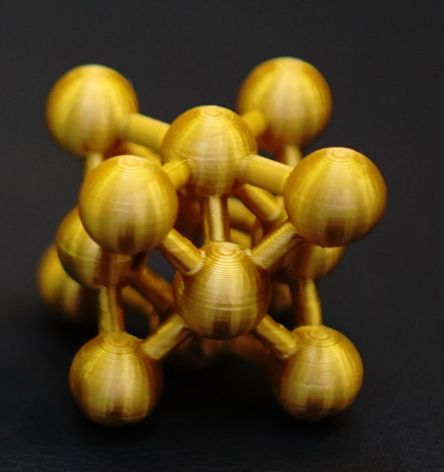
Ruhr University Bochum, ICAMS
RC-FEMS
These patterns are key to geometry, architecture, and—most importantly for us—materials science! 🏗️🔬
#3DPrinting #MaterialsScience

These patterns are key to geometry, architecture, and—most importantly for us—materials science! 🏗️🔬
#3DPrinting #MaterialsScience
Many applications:
- Expanding the Alexandria database 🏛️
- Designing materials with tailored properties 🔬
- Accelerating breakthroughs in energy storage & semiconductors
We’re just getting started!

Many applications:
- Expanding the Alexandria database 🏛️
- Designing materials with tailored properties 🔬
- Accelerating breakthroughs in energy storage & semiconductors
We’re just getting started!
- 8x more likely to generate stable structures than baselines (e.g., PyXtal with charge compensation)
- Fast: 1,000 novel structures/min ⚡
- Control over space group, composition, and stability
- Releasing 3 million compounds generated by the model 📥

- 8x more likely to generate stable structures than baselines (e.g., PyXtal with charge compensation)
- Fast: 1,000 novel structures/min ⚡
- Control over space group, composition, and stability
- Releasing 3 million compounds generated by the model 📥
- Fully leverages Wyckoff positions (discrete + continuous parameters)
- Trained across the periodic table & 230 space groups
- Condition on critical properties like stability
- Fully leverages Wyckoff positions (discrete + continuous parameters)
- Trained across the periodic table & 230 space groups
- Condition on critical properties like stability
Materials are the foundation of modern technology—fueling everything from batteries to semiconductors.
However, generating stable 3D structures near the convex hull is challenging:
- Efficiency ⚡
- Symmetry ⚖️
- Stability 🏔️
Matra-Genoa adresses these challenges.
Materials are the foundation of modern technology—fueling everything from batteries to semiconductors.
However, generating stable 3D structures near the convex hull is challenging:
- Efficiency ⚡
- Symmetry ⚖️
- Stability 🏔️
Matra-Genoa adresses these challenges.




🔑 Key takeaway: uMLIPs are ready for production use in phonon calculations! But choose wisely - not all models performing well on standard benchmarks will give you accurate phonon properties. Training data & architecture choices matter more than model complexity.
🔑 Key takeaway: uMLIPs are ready for production use in phonon calculations! But choose wisely - not all models performing well on standard benchmarks will give you accurate phonon properties. Training data & architecture choices matter more than model complexity.
📊 The tested models fall into 3 clear tiers:
- Tier 1: MatterSim (excellent)
- Tier 2: SevenNet, MACE, CHGNet, M3GNet (good)
- Tier 3: ORB, OMat24 (needs work for phonons)

📊 The tested models fall into 3 clear tiers:
- Tier 1: MatterSim (excellent)
- Tier 2: SevenNet, MACE, CHGNet, M3GNet (good)
- Tier 3: ORB, OMat24 (needs work for phonons)
⚠️ Surprising finding: ORB & OMat24 excel at geometry optimization but struggle with phonons. Why? They predict forces directly instead of deriving them from energy gradients. This leads to issues with the small atomic displacements needed for phonon calculations.

⚠️ Surprising finding: ORB & OMat24 excel at geometry optimization but struggle with phonons. Why? They predict forces directly instead of deriving them from energy gradients. This leads to issues with the small atomic displacements needed for phonon calculations.
🎯 Most accurate model? MatterSim steals the show for phonon predictions! It achieves errors even smaller than the difference between PBE & PBEsol functionals. What's interesting is it outperforms more complex equivariant networks while being based on simpler M3GNet architecture.
🎯 Most accurate model? MatterSim steals the show for phonon predictions! It achieves errors even smaller than the difference between PBE & PBEsol functionals. What's interesting is it outperforms more complex equivariant networks while being based on simpler M3GNet architecture.
🔑 Key takeaway: uMLIPs are ready for production use in phonon calculations! But choose wisely - not all models performing well on standard benchmarks will give you accurate phonon properties. Training data & architecture choices matter more than model complexity.
🔑 Key takeaway: uMLIPs are ready for production use in phonon calculations! But choose wisely - not all models performing well on standard benchmarks will give you accurate phonon properties. Training data & architecture choices matter more than model complexity.
⚠️ Surprising finding: ORB & OMat24 excel at geometry optimization but struggle with phonons. Why? They predict forces directly instead of deriving them from energy gradients. This leads to issues with the small atomic displacements needed for phonon calculations.

⚠️ Surprising finding: ORB & OMat24 excel at geometry optimization but struggle with phonons. Why? They predict forces directly instead of deriving them from energy gradients. This leads to issues with the small atomic displacements needed for phonon calculations.
🎯 Most accurate model? MatterSim steals the show for phonon predictions! It achieves errors even smaller than the difference between PBE & PBEsol functionals. What's interesting is it outperforms more complex equivariant networks while being based on simpler M3GNet architecture.
🎯 Most accurate model? MatterSim steals the show for phonon predictions! It achieves errors even smaller than the difference between PBE & PBEsol functionals. What's interesting is it outperforms more complex equivariant networks while being based on simpler M3GNet architecture.

